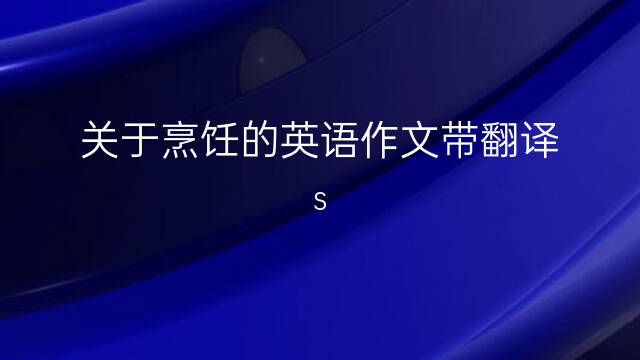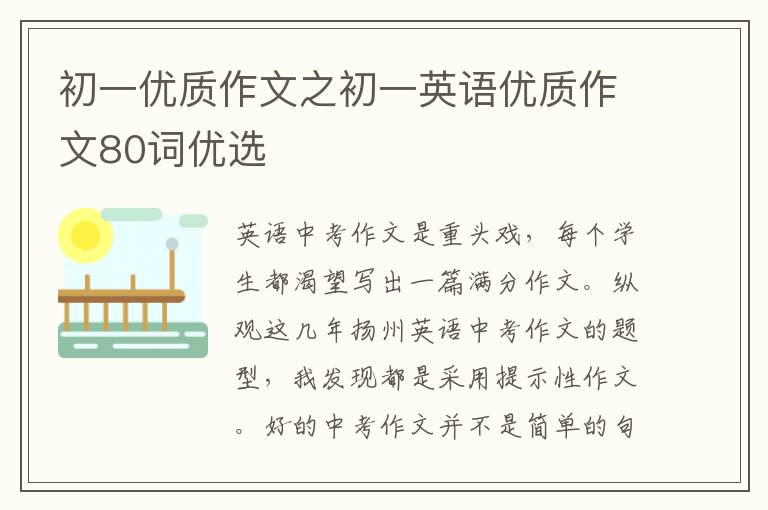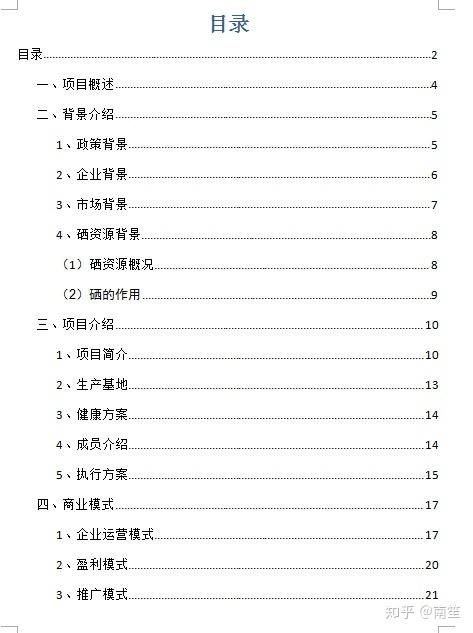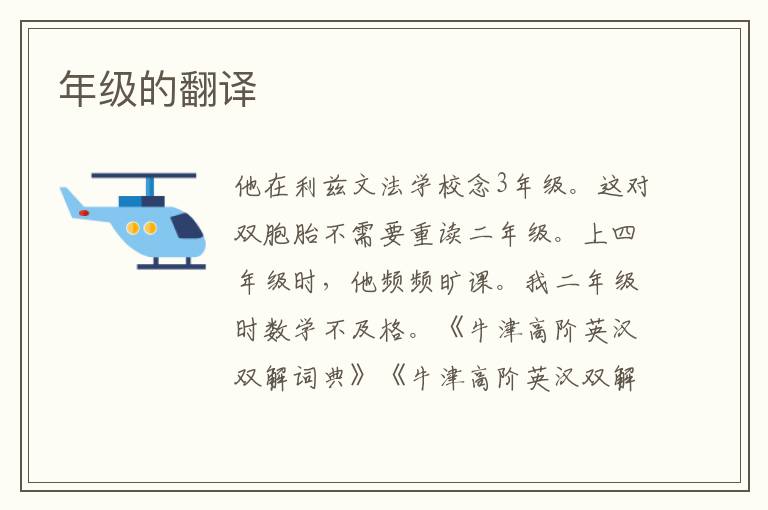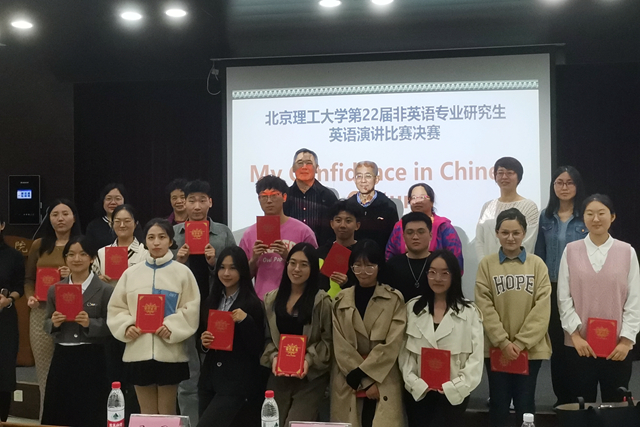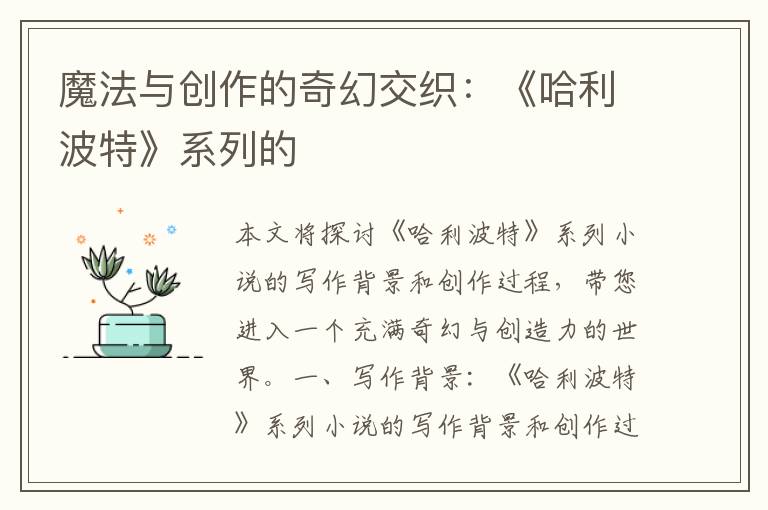雅思閱讀模擬真題:Time to cool it

雅思閱讀真題模擬練習(xí)
本系列的模擬試題在難度、長(zhǎng)度、題材、題型方面都與雅思考試近似的練習(xí)。這些練習(xí),均以國(guó)外報(bào)刊上的文章為素材,按雅思閱讀的題型,出題并提供答案及簡(jiǎn)單注釋。歡迎大家積極使用。
Time to cool it
1 REFRIGERATORS are the epitome of clunky technology: solid, reliable and just a little bit dull. They have not changed much over the past century, but then they have not needed to. They are based on a robust and effective idea--draw heat from the thing you want to cool by evaporating a liquid next to it, and then dump that heat by pumping the vapour elsewhere and condensing it. This method of pumping heat from one place to another served mankind well when refrigerators main jobs were preserving food and, as air conditioners, cooling buildings. Todays high-tech world, however, demands high-tech refrigeration. Heat pumps are no longer up to the job. The search is on for something to replace them.
2 One set of candidates are known as paraelectric materials. These act like batteries when they undergo a temperature change: attach electrodes to them and they generate a current. This effect is used in infra-red cameras. An array of tiny pieces of paraelectric material can sense the heat radiated by, for example, a person, and the pattern of the arrays electrical outputs can then be used to construct an image. But until recently no one had bothered much with the inverse of this process. That inverse exists, however. Apply an appropriate current to a paraelectric material and it will cool down.
3 Someone who is looking at this inverse effect is Alex Mischenko, of Cambridge University. Using commercially available paraelectric film, he and his colleagues have generated temperature drops five times bigger than any previously recorded. That may be enough to change the phenomenon from a laboratory curiosity to something with commercial applications.
4 As to what those applications might be, Dr Mischenko is still a little hazy. He has, nevertheless, set up a company to pursue them. He foresees putting his discovery to use in more efficient domestic fridges and air conditioners. The real money, though, may be in cooling computers.
5 Gadgets containing microprocessors have been getting hotter for a long time. One consequence of Moores Law, which describes the doubling of the number of transistors on a chip every 18 months, is that the amount of heat produced doubles as well. In fact, it more than doubles, because besides increasing in number, the components are getting faster. Heat is released every time a logical operation is performed inside a microprocessor, so the faster the processor is, the more heat it generates. Doubling the frequency quadruples the heat output. And the frequency has doubled a lot. The first Pentium chips sold by Dr Moores company, Intel, in 1993, ran at 60m cycles a second. The Pentium 4--the last single-core desktop processor--clocked up 3.2 billion cycles a second.
6 Disposing of this heat is a big obstruction to further miniaturisation and higher speeds. The innards of a desktop computer commonly hit 80℃. At 85℃, they stop working. Tweaking the processors heat sinks has reached its limit. So has tweaking the fans that circulate air over those heat sinks. And the idea of shifting from single-core processors to systems that divided processing power between first two, and then four, subunits, in order to spread the thermal load, also seems to have the end of the road in sight.
7 One way out of this may be a second curious physical phenomenon, the thermoelectric effect. Like paraelectric materials, this generates electricity from a heat source and produces cooling from an electrical source. Unlike paraelectrics, a significant body of researchers is already working on it.
8 The trick to a good thermoelectric material is a crystal structure in which electrons can flow freely, but the path of phonons--heat-carrying vibrations that are larger than electrons--is constantly interrupted. In practice, this trick is hard to pull off, and thermoelectric materials are thus less efficient than paraelectric ones . Nevertheless, Rama Venkatasubramanian, of Nextreme Thermal Solutions in North Carolina, claims to have made thermoelectric refrigerators that can sit on the back of computer chips and cool hotspots by 10℃. Ali Shakouri, of the University of California, Santa Cruz, says his are even smaller--so small that they can go inside the chip.
9 The last word in computer cooling, though, may go to a system even less techy than a heat pump--a miniature version of a car radiator. Last year Apple launched a personal computer that is cooled by liquid that is pumped through little channels in the processor, and thence to a radiator, where it gives up its heat to the atmosphere. To improve on this, IBMs research laboratory in Zurich is experimenting with tiny jets that stir the liquid up and thus make sure all of it eventually touches the outside of the channel--the part where the heat exchange takes place. In the future, therefore, a combination of microchannels and either thermoelectrics or paraelectrics might cool computers. The old, as it were, hand in hand with the new.
Questions 1-5 Complete each of the following statements with the scientist or company name from the box below.
Write the appropriate letters A-F in boxes 1-5 on your answer sheet.
A. Apple
B. IBM
C. Intel
D. Alex Mischenko
E. Ali Shakouri
F. Rama Venkatasubramanian
1. ...and his research group use paraelectric film available from the market to produce cooling.
2. ...sold microprocessors running at 60m cycles a second in 1993.
3. ...says that he has made refrigerators which can cool the hotspots of computer chips by 10℃.
4. ...claims to have made a refrigerator small enough to be built into a computer chip.
5. ...attempts to produce better cooling in personal computers by stirring up liquid with tiny jets to make sure maximum heat exchange.
Questions 6-9 Do the following statements agree with the information given in the reading passage?
In boxes 6-9 on your answer sheet write
TRUE if the statement is true according to the passage
FALSE if the statement is false according to the passage
NOT GIVEN if the information is not given in the passage
6. Paraelectric materials can generate a current when electrodes are attached to them.
7. Dr. Mischenko has successfully applied his laboratory discovery to manufacturing more efficient referigerators.
8. Doubling the frequency of logical operations inside a microprocessor doubles the heat output.
9. IBM will achieve better computer cooling by combining microchannels with paraelectrics.
Question 10 Choose the appropriate letters A-D and write them in box 10 on your answer sheet.
10. Which method of disposing heat in computers may have a bright prospect?
A. Tweaking the processors?heat sinks.
B. Tweaking the fans that circulate air over the processor抯 heat sinks.
C. Shifting from single-core processors to systems of subunits.
D. None of the above.
Questions 11-14 Complete the notes below.
Choose one suitable word from the Reading Passage above for each answer.
Write your answers in boxes 11-14 on your answer sheet.
Traditional refrigerators use...11...pumps to drop temperature. At present, scientists are searching for other methods to produce refrigeration, especially in computer microprocessors....12...materials have been tried to generate temperature drops five times bigger than any previously recorded. ...13...effect has also been adopted by many researchers to cool hotspots in computers. A miniature version of a car ...14... may also be a system to realize ideal computer cooling in the future.
Key and Explanations:
1. D
See Paragraph 3: ...Alex Mischenko, of Cambridge University. Using commercially available paraelectric film, he and his colleagues have generated temperature drops...
2. C
See Paragraph 5: The first Pentium chips sold by Dr Moores company, Intel, in 1993, ran at 60m cycles a second.
3. F
See Paragraph 8: ...Rama Venkatasubramanian, of Nextreme Thermal Solutions in North Carolina, claims to have made thermoelectric refrigerators that can sit on the back of computer chips and cool hotspots by 10℃.
4. E
See Paragraph 8: Ali Shakouri, of the University of California, Santa Cruz, says his are even smaller梥o small that they can go inside the chip.
5. B
See Paragraph 9: To improve on this, IBMs research laboratory in Zurich is experimenting with tiny jets that stir the liquid up and thus make sure all of it eventually touches the outside of the channel--the part where the heat exchange takes place.
6. TRUE
See Paragraph 2: ...paraelectric materials. These act like batteries when they undergo a temperature change: attach electrodes to them and they generate a current.
7. FALSE
See Paragraph 3 and Paragraph 4 (As to what those applications might be, Dr Mischenko is still a little hazy. He has, nevertheless, set up a company to pursue them. He foresees putting his discovery to use in more efficient domestic fridges?
8. FALSE
See Paragraph 5: Heat is released every time a logical operation is performed inside a microprocessor, so the faster the processor is, the more heat it generates. Doubling the frequency quadruples the heat output.
9. NOT GIVEN
See Paragraph 9: In the future, therefore, a combination of microchannels and either thermoelectrics or paraelectrics might cool computers.
10. D
See Paragraph 6: Tweaking the processors heat sinks ?has reached its limit. So has tweaking the fans that circulate air over those heat sinks. And the idea of shifting from single-core processors to systems?also seems to have the end of the road in sight.
11. heat
See Paragraph 1: Todays high-tech world, however, demands high-tech refrigeration. Heat pumps are no longer up to the job. The search is on for something to replace them.
12. paraelectric
See Paragraph 3: Using commercially available paraelectric film, he and his colleagues have generated temperature drops five times bigger than any previously recorded.
13. thermoelectric
See Paragraph 7: ...the thermoelectric effect. Like paraelectric materials, this generates electricity from a heat source and produces cooling from an electrical source. Unlike paraelectrics, a significant body of researchers is already working on it.
14. radiator
See Paragraph 9: The last word in computer cooling, though, may go to a system even less techy than a heat pump--a miniature version of a car radiator.
雅思閱讀真題模擬練習(xí)
本系列的模擬試題在難度、長(zhǎng)度、題材、題型方面都與雅思考試近似的練習(xí)。這些練習(xí),均以國(guó)外報(bào)刊上的文章為素材,按雅思閱讀的題型,出題并提供答案及簡(jiǎn)單注釋。歡迎大家積極使用。
Time to cool it
1 REFRIGERATORS are the epitome of clunky technology: solid, reliable and just a little bit dull. They have not changed much over the past century, but then they have not needed to. They are based on a robust and effective idea--draw heat from the thing you want to cool by evaporating a liquid next to it, and then dump that heat by pumping the vapour elsewhere and condensing it. This method of pumping heat from one place to another served mankind well when refrigerators main jobs were preserving food and, as air conditioners, cooling buildings. Todays high-tech world, however, demands high-tech refrigeration. Heat pumps are no longer up to the job. The search is on for something to replace them.
2 One set of candidates are known as paraelectric materials. These act like batteries when they undergo a temperature change: attach electrodes to them and they generate a current. This effect is used in infra-red cameras. An array of tiny pieces of paraelectric material can sense the heat radiated by, for example, a person, and the pattern of the arrays electrical outputs can then be used to construct an image. But until recently no one had bothered much with the inverse of this process. That inverse exists, however. Apply an appropriate current to a paraelectric material and it will cool down.
3 Someone who is looking at this inverse effect is Alex Mischenko, of Cambridge University. Using commercially available paraelectric film, he and his colleagues have generated temperature drops five times bigger than any previously recorded. That may be enough to change the phenomenon from a laboratory curiosity to something with commercial applications.
4 As to what those applications might be, Dr Mischenko is still a little hazy. He has, nevertheless, set up a company to pursue them. He foresees putting his discovery to use in more efficient domestic fridges and air conditioners. The real money, though, may be in cooling computers.
5 Gadgets containing microprocessors have been getting hotter for a long time. One consequence of Moores Law, which describes the doubling of the number of transistors on a chip every 18 months, is that the amount of heat produced doubles as well. In fact, it more than doubles, because besides increasing in number, the components are getting faster. Heat is released every time a logical operation is performed inside a microprocessor, so the faster the processor is, the more heat it generates. Doubling the frequency quadruples the heat output. And the frequency has doubled a lot. The first Pentium chips sold by Dr Moores company, Intel, in 1993, ran at 60m cycles a second. The Pentium 4--the last single-core desktop processor--clocked up 3.2 billion cycles a second.
6 Disposing of this heat is a big obstruction to further miniaturisation and higher speeds. The innards of a desktop computer commonly hit 80℃. At 85℃, they stop working. Tweaking the processors heat sinks has reached its limit. So has tweaking the fans that circulate air over those heat sinks. And the idea of shifting from single-core processors to systems that divided processing power between first two, and then four, subunits, in order to spread the thermal load, also seems to have the end of the road in sight.
7 One way out of this may be a second curious physical phenomenon, the thermoelectric effect. Like paraelectric materials, this generates electricity from a heat source and produces cooling from an electrical source. Unlike paraelectrics, a significant body of researchers is already working on it.
8 The trick to a good thermoelectric material is a crystal structure in which electrons can flow freely, but the path of phonons--heat-carrying vibrations that are larger than electrons--is constantly interrupted. In practice, this trick is hard to pull off, and thermoelectric materials are thus less efficient than paraelectric ones . Nevertheless, Rama Venkatasubramanian, of Nextreme Thermal Solutions in North Carolina, claims to have made thermoelectric refrigerators that can sit on the back of computer chips and cool hotspots by 10℃. Ali Shakouri, of the University of California, Santa Cruz, says his are even smaller--so small that they can go inside the chip.
9 The last word in computer cooling, though, may go to a system even less techy than a heat pump--a miniature version of a car radiator. Last year Apple launched a personal computer that is cooled by liquid that is pumped through little channels in the processor, and thence to a radiator, where it gives up its heat to the atmosphere. To improve on this, IBMs research laboratory in Zurich is experimenting with tiny jets that stir the liquid up and thus make sure all of it eventually touches the outside of the channel--the part where the heat exchange takes place. In the future, therefore, a combination of microchannels and either thermoelectrics or paraelectrics might cool computers. The old, as it were, hand in hand with the new.
Questions 1-5 Complete each of the following statements with the scientist or company name from the box below.
Write the appropriate letters A-F in boxes 1-5 on your answer sheet.
A. Apple
B. IBM
C. Intel
D. Alex Mischenko
E. Ali Shakouri
F. Rama Venkatasubramanian
1. ...and his research group use paraelectric film available from the market to produce cooling.
2. ...sold microprocessors running at 60m cycles a second in 1993.
3. ...says that he has made refrigerators which can cool the hotspots of computer chips by 10℃.
4. ...claims to have made a refrigerator small enough to be built into a computer chip.
5. ...attempts to produce better cooling in personal computers by stirring up liquid with tiny jets to make sure maximum heat exchange.
Questions 6-9 Do the following statements agree with the information given in the reading passage?
In boxes 6-9 on your answer sheet write
TRUE if the statement is true according to the passage
FALSE if the statement is false according to the passage
NOT GIVEN if the information is not given in the passage
6. Paraelectric materials can generate a current when electrodes are attached to them.
7. Dr. Mischenko has successfully applied his laboratory discovery to manufacturing more efficient referigerators.
8. Doubling the frequency of logical operations inside a microprocessor doubles the heat output.
9. IBM will achieve better computer cooling by combining microchannels with paraelectrics.
Question 10 Choose the appropriate letters A-D and write them in box 10 on your answer sheet.
10. Which method of disposing heat in computers may have a bright prospect?
A. Tweaking the processors?heat sinks.
B. Tweaking the fans that circulate air over the processor抯 heat sinks.
C. Shifting from single-core processors to systems of subunits.
D. None of the above.
Questions 11-14 Complete the notes below.
Choose one suitable word from the Reading Passage above for each answer.
Write your answers in boxes 11-14 on your answer sheet.
Traditional refrigerators use...11...pumps to drop temperature. At present, scientists are searching for other methods to produce refrigeration, especially in computer microprocessors....12...materials have been tried to generate temperature drops five times bigger than any previously recorded. ...13...effect has also been adopted by many researchers to cool hotspots in computers. A miniature version of a car ...14... may also be a system to realize ideal computer cooling in the future.
Key and Explanations:
1. D
See Paragraph 3: ...Alex Mischenko, of Cambridge University. Using commercially available paraelectric film, he and his colleagues have generated temperature drops...
2. C
See Paragraph 5: The first Pentium chips sold by Dr Moores company, Intel, in 1993, ran at 60m cycles a second.
3. F
See Paragraph 8: ...Rama Venkatasubramanian, of Nextreme Thermal Solutions in North Carolina, claims to have made thermoelectric refrigerators that can sit on the back of computer chips and cool hotspots by 10℃.
4. E
See Paragraph 8: Ali Shakouri, of the University of California, Santa Cruz, says his are even smaller梥o small that they can go inside the chip.
5. B
See Paragraph 9: To improve on this, IBMs research laboratory in Zurich is experimenting with tiny jets that stir the liquid up and thus make sure all of it eventually touches the outside of the channel--the part where the heat exchange takes place.
6. TRUE
See Paragraph 2: ...paraelectric materials. These act like batteries when they undergo a temperature change: attach electrodes to them and they generate a current.
7. FALSE
See Paragraph 3 and Paragraph 4 (As to what those applications might be, Dr Mischenko is still a little hazy. He has, nevertheless, set up a company to pursue them. He foresees putting his discovery to use in more efficient domestic fridges?
8. FALSE
See Paragraph 5: Heat is released every time a logical operation is performed inside a microprocessor, so the faster the processor is, the more heat it generates. Doubling the frequency quadruples the heat output.
9. NOT GIVEN
See Paragraph 9: In the future, therefore, a combination of microchannels and either thermoelectrics or paraelectrics might cool computers.
10. D
See Paragraph 6: Tweaking the processors heat sinks ?has reached its limit. So has tweaking the fans that circulate air over those heat sinks. And the idea of shifting from single-core processors to systems?also seems to have the end of the road in sight.
11. heat
See Paragraph 1: Todays high-tech world, however, demands high-tech refrigeration. Heat pumps are no longer up to the job. The search is on for something to replace them.
12. paraelectric
See Paragraph 3: Using commercially available paraelectric film, he and his colleagues have generated temperature drops five times bigger than any previously recorded.
13. thermoelectric
See Paragraph 7: ...the thermoelectric effect. Like paraelectric materials, this generates electricity from a heat source and produces cooling from an electrical source. Unlike paraelectrics, a significant body of researchers is already working on it.
14. radiator
See Paragraph 9: The last word in computer cooling, though, may go to a system even less techy than a heat pump--a miniature version of a car radiator.


